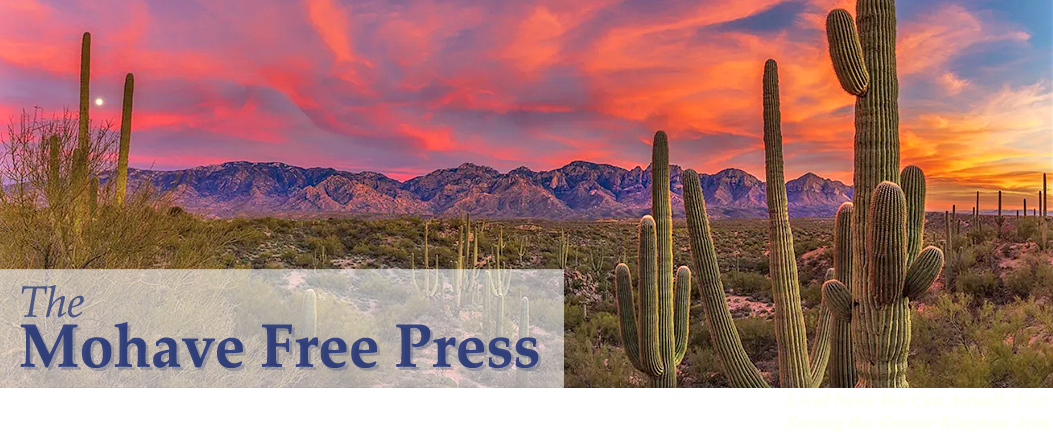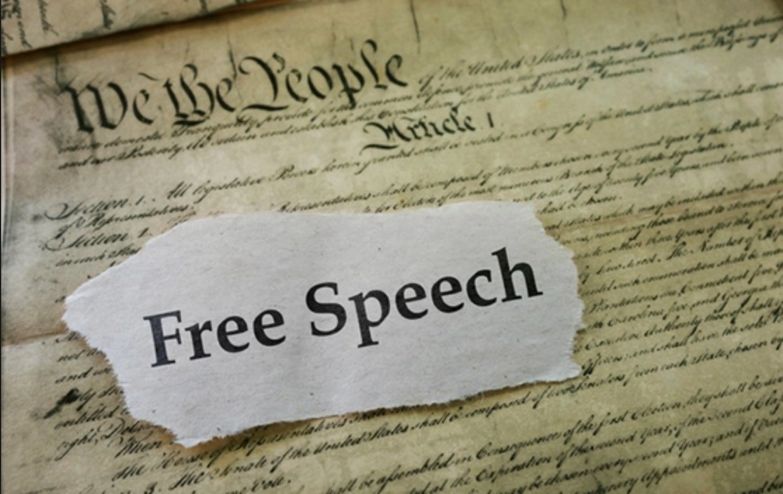Understanding the First Amendment
"Congress shall make no Law respecting an Establishment of Religion, or prohibiting the free exercise thereof; or abridging the freedom of speech, or of the press: or the right of the people peaceably to assemble, and to petition the Government for a redress of grievances."
From an early age, we are all taught that we have First Amendment Rights to free speech, freedom of religion, assembly and protest, and of the press. But how many people actually read the First Amendment?
I put Congress in bold because this Amendment clearly and undeniably is written as a prohibition on what Congress can do. Congress, as we all know, is the Legislative Branch of the Federal Government; an equal Branch to the Executive and Judicial Branches. Created by the US Constitution in Article 1, Congress had been given sweeping authority that our Fledgling Union of Thirteen States found nearly abhorrent. So much was the Ratification of the Constitution opposed by the States, that numerous articles were written and printed, that became know as the Federalist Papers, showing why we needed a strong Central Government, and that several States refused to Ratify the Constitution until they received promises that upon the establishment of the Federal Government, a Bill of Rights would be proposed and ratified to curtail the Powers that this new Government could easily assume.
A reading of the Declaration of Independence gives a clear understanding of why we have a Bill of Rights and why they were written in the manner that they were. The States, and the people there in, did not want to hand their newly-won freedom to a new authoritarian Government. Many of the grievances listed against the British Crown in the Declaration of Independence are clearly addressed in the Bill of Rights. Chief among these, the First Amendment, was to prohibit Congress from enacting Laws that would usurp the Rights that we had just won our Independence for.
Stepping back into that time, we would find that whole Communities were set up based on a common religious belief, their right to assemble, to speak freely. Congress must be prohibited from legislating these Rights away.
And so the First Amendment was written to prohibit Congress - and Congress alone.
The Rights that we believe the First Amendment give us are neither expressed nor implied. These Rights were to be left to the States and to the People, as the Tenth Amendment so states.
- Conservative Bob, Kingman
Is Cliven Bundy's Grazing and Water Rights still valid today?
"Why does Cliven feel entitled to use of the land? Or is he actually paying the land use fees and BLM is not being truthful about that?" (a question from a friend)
Let me try the short answer.The BLM evolved from the Taylor Grazing Act of circa 1934. The Grazing Act was established to set boundaries in what can only be best described as a period of Range Wars. It was a free for all, and sheep, cattle, and horses were plaguing the lands. They ate flora to the ground, yet the tortoise flourished. You see, turtles eat poop and the more the poop, the more the turtle eats.
OK, so if I've run off tract, let me get back to Bundys. So Cliven was paying for management. That includes infrastructure improvements, etc., not a grazing fee. Like a miner owns a claim, Cliven owns the grazing rights as well as water rights. These are all deeded and only revocable when the use has been discontinued. They then revert to the state or county or another authority or otherwise transferred.
Now, we come back to the turtle, and the heart of the issue, the Endangered Species Act. It says habitat needs preservation, which precludes habitat enhancements provided by the rancher and subsequent cattle. All this considered provides for an abundance of other wildlife from the bug to the big horn sheep...
Cliven no longer maintains a contract with the Bureau of Land Management in regards to their efforts to manage him "out of business."...
Cliven hasn't relented or transferred any deed or title. There hasn't been any filing to counter his ownership, only to remove his access to such, a result of which would after a period of time of not utilizing said property would cause him to relinquish title and possession.
- Vincent Easley II
RealLibertyMedia.com
What’s in your water; is it safe to drink?
I was talking with a friend of mine who resides in Golden Valley and our conversation drifted to wells.
He told me his well is about 1,000 feet deep, produces about 11 to 13 gallons per minute and the water coming out of it is about 96 degrees Fahrenheit. He further told me that the water temperature of all of the neighbors' wells is also about 96 degrees Fahrenheit. I thought the extremely warm water temperature was a little strange because I hadn't heard of any geothermal activity in Golden Valley or the surrounding area.
The warm well water spurred me to do some research to figure out the reasoning for hot water being pumped out of local wells.
I didn't find the exact answer related to the water temperature, but I did discover a 1999 government study that indicated 67 wells or test sites in the Sacramento Valley Groundwater Basin had been tested and the temperature of the water coming out of the test sites ranged from 54.752 degrees Fahrenheit sampled from a spring near the foothills of the Hualapai Mountains east of I-40 and Yucca, to a whopping 108.356 degrees Fahrenheit temperature from a 720-foot well just north of Topock.
There were seven springs in various areas of the Sacramento Valley Ground Basin (SVGB). The deepest well, located in Golden Valley north of Highway 68, goes to 1,355 feet, with the water level at 820 feet and a water temperature of 97.196 degrees Fahrenheit.
Some of the wells located within the 1,587 square-mile SVGB tested during 1999 contained elements and compounds that exceeded the proposed Primary Maximum Contaminant Levels established by Arizona Department of Environmental Quality. Seventeen out of 67 test wells or sites contained uranium, four wells contained radium 226+228, and another nasty compound called perchlorate was discovered in four wells.
What is radium 226+228? The simplest answer is that radium emits several different kinds of radiation, specifically alpha particles and gamma rays. Long-term exposure to radium increases the risk of developing lymphoma, bone cancer, and diseases that affect the formation of blood, such as leukemia and aplastic anemia, a condition where bone marrow does not produce sufficient new cells to replenish blood cells. Exposure to radium's gamma radiation increases the risk of cancer to varying degrees in all tissues and organs. And the other nasty chemical compound called perchlorate can disrupt the thyroid's ability to produce hormones needed for normal growth and development.
Not all of the other elements, chemicals and/or compounds that were found in some of the 67 wells or test sites in 1999 are bad for your health, but some are potentially dangerous.
- Arsenic concentrations compromise the initial immune response to H1N1 or swine flu infection, according to some scientists.
- Antimony can cause headaches, dizziness, and depression in small doses, and in larger doses can damage the kidneys and the liver, causing violent and frequent vomiting.
- Barium can affect the nervous system, causing cardiac irregularities, tremors, weakness, anxiety, shortness of breath and paralysis.
- Nitrates are generally associated with septic systems, confined animal feeding operations or fertilizer use and can interfere with the ability of red blood cells to carry oxygen to the tissues of the body, producing a condition called methemoglobinemia.
- Chromium compounds used in dyes and paints and the tanning of leather.
- Radon, the No. 1 cause of lung cancer among non-smokers.
The most interesting thing I discovered in the 1999 study: The 1,355-foot well is isomorphic to groundwater samples determined to be a mixture of Colorado River and local recharge. The study raises the question of whether and/or how the possible recharge of the deep Sacramento Valley Groundwater Basin could be from the Colorado River. The study even alludes to the possibility the course of the Colorado River was originally through Detrital Valley (north of Golden Valley) and Sacramento Valley (now called Golden Valley), and possibly exited into the present-day course of the Colorado River at Topock.
After speaking with officials for the various water companies and water districts, it was determined they believe the water in the underground lake beneath SVGB is warmed by the Earth's core and geothermal activity.
I believe many of the questions relating to the SVGB aquifer that are continually raised by residents of Golden Valley and the surrounding areas could be unequivocally answered if the U.S. government would fly a large aircraft over Lake Mead and drop a giant purple pill into it. If the water that comes out water faucets and from our wells in SVGB has a purple tint to it, then we all would know the source for recharging of SVGB - the Colorado River.
I someone is concerned about their water and would like to know what may or may not be in their water supply, they should contact their local water company or an independent water testing facility.
People interested in learning more about the 1999 Ambient Groundwater Quality of the Sacramento Valley Basin Baseline Study and the quality of the water can go to:
http://www.azdeq.gov/environ/water/assessment/download/ofr-01-04.pdf for the entire text of the report.
- Butch Meriwether, Golden Valley
Opinions expressed do not necessarily reflect the views of the
publisher. Letters to “FREE” SPEECH are printed as space allows and at
publisher’s discretion. There is no guarantee of publication.

